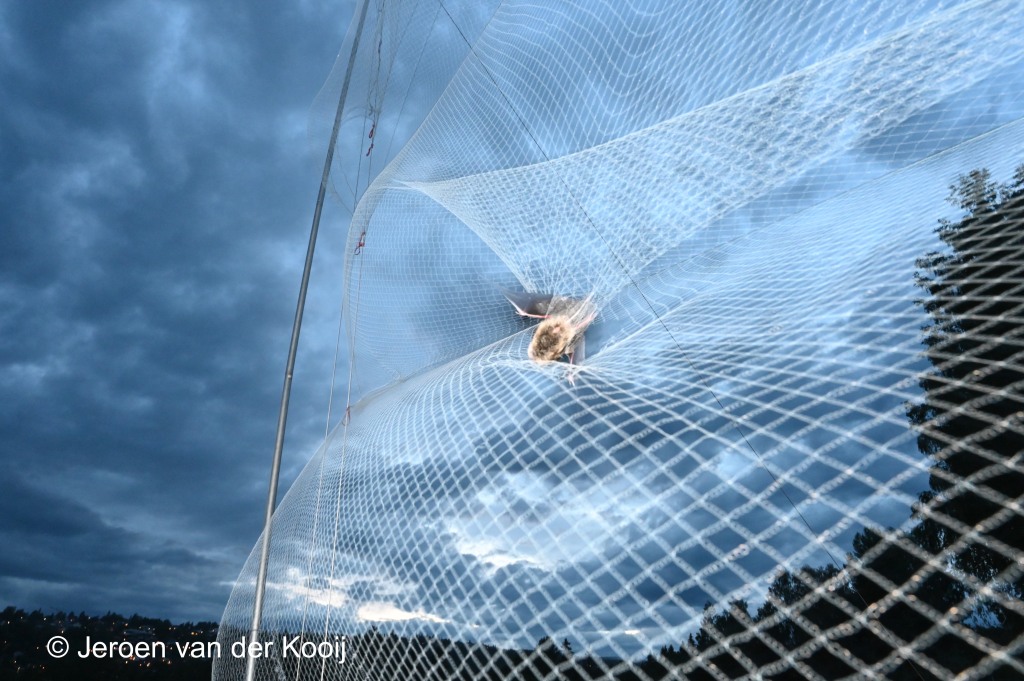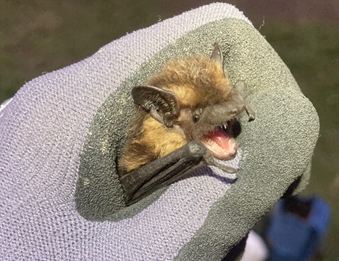This blog post is provided by Mari Aas Fjelldal and tells the #StoryBehindthePaper for the paper “The small-bat-in-summer paradigm: energetics and adaptive behavioural routines of bats investigated through a stochastic dynamic model”, which was recently published in Journal of Animal Ecology. In their study, they present a model framework of the behavioural decisions small bats make in order to survive the short summer nights at high latitudes. Mari Aas Fjelldal, the lead author of the study, recently defended her PhD-thesis titled “Physiological and ecological challenges faced by small bats in summer” at NTNU in Trondheim, Norway. The model presented in this blog post was a large part of her thesis-work and will play a major role in her future research projects as well.
Our idea
Bats are nocturnal foragers and face a particular challenge during summer in the north: summer nights at high latitudes are short and light, which limits the time bats have available to forage during the active season. As insect-eaters, bats also target a food source that vary with weather conditions while the energetic costs of flying and echolocation remain high. Bats therefore risk using more energy than they gain during short summer nights.
As a solution bats can use torpor, an energy saving strategy, to save reserves during the day or during nights with poor foraging conditions. But rewarming from torpor is costly from low temperatures, and torpid bats miss out on social, physiological and ecological benefits. So when should a bat use torpor in summer? We set out to investigate how the combination of individual energetic state and environmental temperature conditions during daytime and nighttime influence decisions in bats across latitudes in Norway.
Our model
We developed a stochastic dynamic programming model where we calculated optimal decisions in bats across time, states, day-types and locations. By including existing ecological and physiological data from bats, the model evaluated costs and benefits of various behaviors, calculated the optimal decision under various conditions, and predicted the consequences of each choice. Our model-bats could choose between three decisions at any given time: to be ‘torpid in the roost’, to be ‘resting in the roost’, or to ‘forage outside the roost’. We included temperature conditions and predation threat as fluctuating values throughout the day and night, while energy use depended on temperature conditions and the chosen behaviour. With this model we simulated expected individual decisions and their survival consequences for bat populations over time.

Our results
We showed that on very cold days bats were unable to gain enough energy to compensate for their energy expenditure if they left the roost to forage, and they therefore spent both days and nights torpid. However, as days got gradually warmer, bats spent less and less time torpid, but the amount of torpor spent also depended on how much energy reserves they carried, where bats with more reserves spent less time torpid than starved individuals. Furthermore, bats at higher latitudes spent more time torpid compared to bats at lower latitudes when faced with the same temperature conditions and energy reserves, likely because of the shorter nights and limited foraging time further north.
We also found that different torpor patterns observed in bats and other heterotherms (e.g. individuals spending a full day torpid versus expressing a single torpor bout in the morning versus rewarming in the middle of the day just to enter torpor again in the evening) can be explained by a combination of daily temperature fluctuations and individual energetic states. On very cold days energy reserves were unimportant and the bats would spend the full day and night torpid regardless. However, on warmer days bats would use torpor in the morning and often rewarm during the middle of the day – if they had a decent level of energy reserves, and then either re-enter torpor in the afternoon or stay ‘awake’ until the evening, depending on temperature conditions and individual energy levels.

Simulations of populations across latitudes showed that the survival of bats living up to a certain latitude in Norway (≥ 67.3°N) was more or less buffered against environmental variation by their strategic use of torpor during the lightest summer month. Further north (69.6°N), the simulated bat populations seemed to be at the very edge of their distributional range limit in regards to summer survival, even with all their behavioural adjustments in torpor and foraging behaviour, which aligns with the observed distributional range of northern bats (Eptesicus nilssonii) in Norway.
Our conclusions
We believe that this model framework of optimal decisions made by small bats in summer helps us understand behavioural adaptations in bats living at high latitudes. Now we know a bit more about how bats in the north spend their summers and what drives their decisions throughout the daily cycle.
Read the full paper
Fjelldal, M. A., Muller, A. S., Ratikainen, I. I., Stawski, C., & Wright, J. (2023). The small-bat-in-summer paradigm: Energetics and adaptive behavioural routines of bats investigated through a stochastic dynamic model. Journal of Animal Ecology, 00, 1–16. https://doi.org/10.1111/1365-2656.13999


